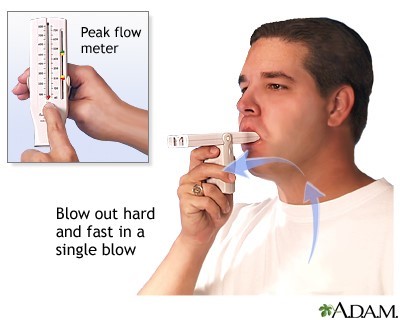A nurse on a medical-surgical unit is collecting data from a client who is postoperative following abdominal surgery.
The client’s BP was 126/72 mm Hg 15 min ago. The nurse now finds that the client’s BP is 176/96 mm Hg. Which of the following actions should the nurse take?
Deflate the cuff faster when repeating the BP measurement.
Request a prescription for an antihypertensive medication.
Use a narrower cuff to repeat the BP measurement.
Measure the client’s BP in the other arm.
The Correct Answer is D
It's common practice to check blood pressure in both arms when there is a significant discrepancy in blood pressure readings between the arms. This discrepancy could be due to factors like arterial blockages or other conditions. By measuring the blood pressure in the other arm, the nurse can confirm whether the high blood pressure is consistent on both sides or if there was an issue with the initial measurement. This step helps provide a more accurate assessment of the client's blood pressure.
- The other options are not appropriate at this stage:
Deflating the cuff faster may not resolve the issue and could lead to inaccurate measurements.
Requesting a prescription for an antihypertensive medication should only be done after confirming the blood pressure is consistently elevated and under the direction of a healthcare provider.
Using a narrower cuff is not indicated in this situation. It's more important to assess the other arm's blood pressure to identify any discrepancies.
Nursing Test Bank
Naxlex Comprehensive Predictor Exams
Related Questions
Correct Answer is D
Explanation
The correct answer is choice D. “I’ll think about my grandfather’s farm to reduce pain.” This statement indicates an understanding of guided imagery, which is a relaxation technique that aims to help lower the levels of stress hormones and pain perception by imagining a scene that involves each of the senses and positive emotions.
Guided imagery can help to distract from pain signals and reduce anxiety, which can also contribute to pain.
Choice A is wrong because it does not involve creating a specific imagined reality, but rather noticing the sensation of muscle tension, which may increase awareness of pain.
Choice B is wrong because it does not involve using all of the senses and emotions, but rather listening to music, which may be relaxing but not as effective as guided imagery for pain relief.
Choice C is wrong because it does not involve imagining a scene, but rather using focused breathing to control pain, which is another relaxation technique but not guided imagery.
Correct Answer is A
Explanation
This is because the nurse should first assess the client’s baseline knowledge and readiness to learn before providing any teaching.
The nurse should also tailor the teaching to the client’s individual needs and preferences.
Choice B is wrong because showing the client a video demonstration of peak flow meter use may not be the most effective way of teaching if the client has different learning styles or needs.
The nurse should also involve the client in the learning process and not just rely on passive methods.
Choice C is wrong because observing the client using the peak flow meter is an evaluation step that should be done after teaching and reinforcing the correct technique.
The nurse should not assume that the client knows how to use the peak flow meter without assessing their knowledge first.
Choice D is wrong because emphasizing the importance of the daily use of the peak flow meter is a motivational strategy that should be done after assessing the client’s knowledge and providing teaching.
The nurse should also explain the rationale and benefits of using the peak flow meter, not just tell the client to do it.
A peak flow meter is a small device that measures how fast a person can forcefully blow air out of their lungs in one fast breath.
It is one indicator of airways changes that may occur in people with asthma or COPD.
To get a peak flow meter, speak to a doctor.

Whether you are a student looking to ace your exams or a practicing nurse seeking to enhance your expertise , our nursing education contents will empower you with the confidence and competence to make a difference in the lives of patients and become a respected leader in the healthcare field.
Visit Naxlex, invest in your future and unlock endless possibilities with our unparalleled nursing education contents today
Report Wrong Answer on the Current Question
Do you disagree with the answer? If yes, what is your expected answer? Explain.
Kindly be descriptive with the issue you are facing.
